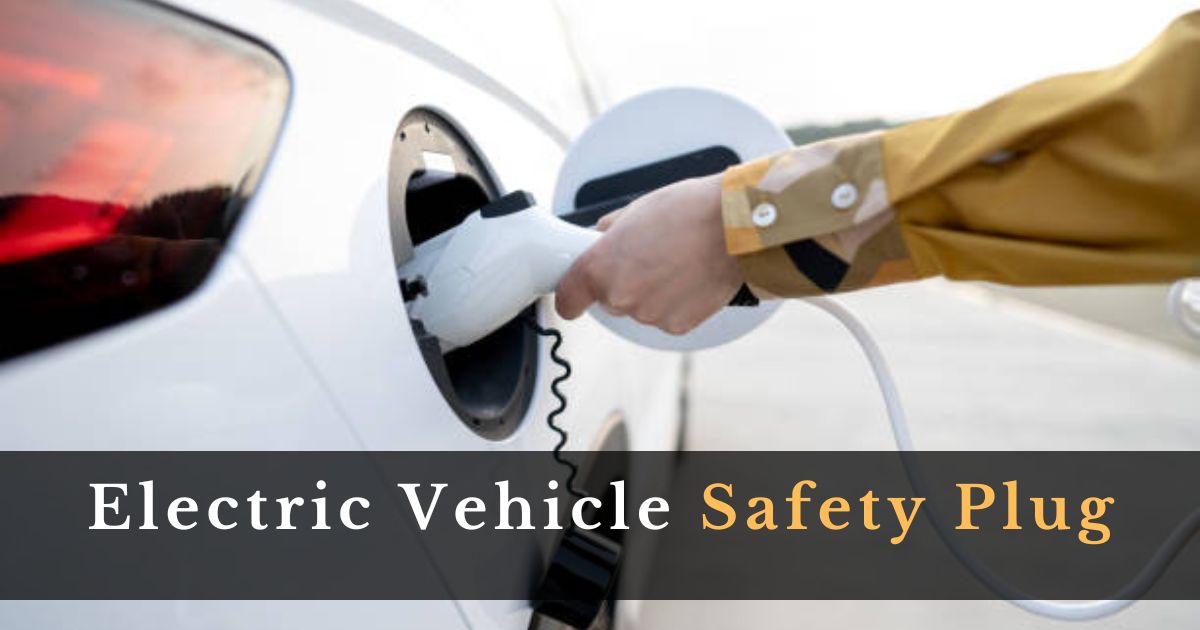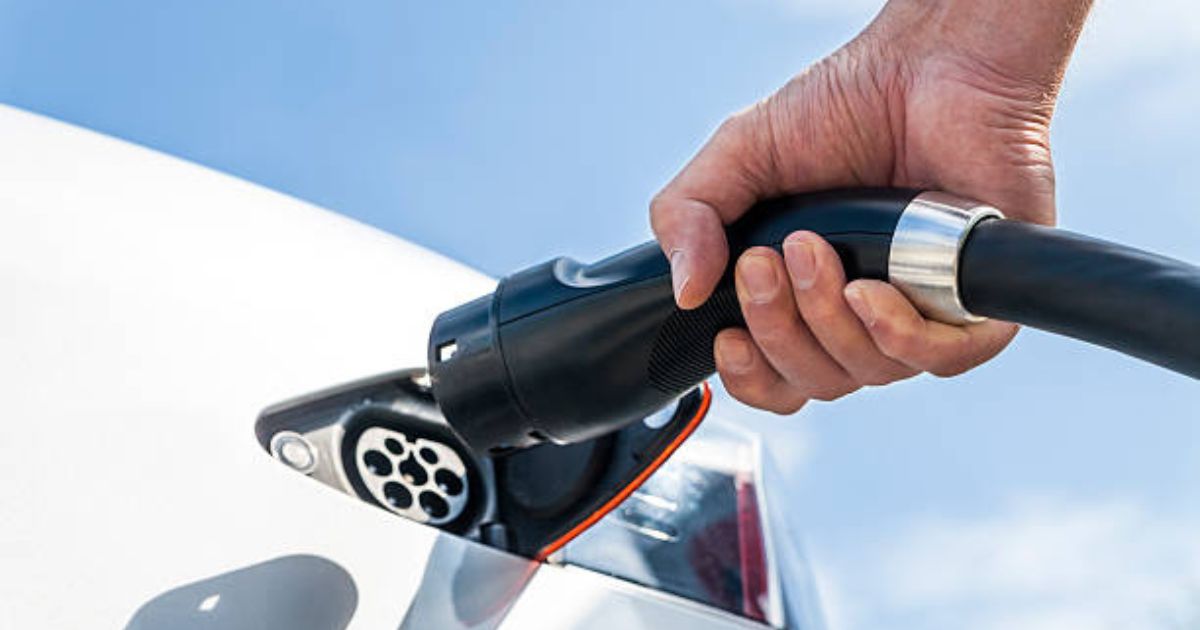Electric vehicle safety plug, Electric vehicles (EVs) are getting more popular because they are good for the environment and efficient to use. As more people start driving EVs, it’s really important to know about their safety features, especially the Electric Vehicle Safety Plug. This plug is essential for making sure that charging and running your EV is safe. In this article, we’ll explain what an EV safety plug is, why it matters, and how it keeps electric cars safe.
Electric Vehicle Safety Plug
Introduction
Electric vehicles (EVs) are becoming more popular every day, offering a cleaner and more efficient alternative to traditional gasoline-powered cars. But with this new technology comes new safety considerations. One of the essential components for ensuring the safety of electric vehicles is the EV safety plug. In this article, we’ll explore what EV safety plugs are, why they are important, and how they work to keep you safe on the road.
Understanding Electric Vehicle Safety Plugs
What is an EV Safety Plug?
An EV safety plug is a device designed to safely connect and disconnect the electrical supply to an electric vehicle. It ensures that the vehicle can be charged without posing any electrical hazards to the user or the vehicle itself.
Role of Safety Plugs in EVs
Safety plugs play a critical role in electric vehicles. They not only facilitate the charging process but also incorporate features that prevent electrical shocks, overheating, and other potential dangers. By ensuring a secure connection, they help maintain the overall safety and efficiency of the vehicle.
Components of EV Safety Plugs
Main Parts of a Safety Plug
EV safety plugs consist of several key components, including the plug itself, the connector, the cable, and safety features like insulation and grounding mechanisms. Each part has a specific function to ensure the plug operates safely and effectively.
How Each Component Works
The plug connects to the vehicle’s charging port, while the connector links to the power source. The cable transmits electricity from the source to the vehicle. Insulation protects against electrical shocks, and grounding mechanisms prevent electrical surges from damaging the vehicle.
Types of EV Safety Plugs
Different Plug Designs
There are various designs of EV safety plugs, each compatible with different types of electric vehicles. Some common designs include the Type 1 (SAE J1772) and Type 2 (Mennekes) plugs, which are used in North America and Europe, respectively.
Compatibility with Various EV Models
Different EV models may require specific types of safety plugs. It’s essential to ensure that the plug you use is compatible with your vehicle to ensure efficient and safe charging.
Installation and Maintenance
How to Install an EV Safety Plug
Installing an EV safety plug is relatively straightforward. First, ensure that your vehicle is turned off. Then, connect the plug to the vehicle’s charging port and the connector to the power source. Always follow the manufacturer’s instructions for a safe installation.
Tips for Maintaining Your Safety Plug
Regular maintenance of your EV safety plug can extend its lifespan and ensure it remains safe to use. Keep the plug clean, check for any signs of wear and tear, and replace any damaged components promptly.
Safety Features of EV Safety Plugs
Key Safety Mechanisms
EV safety plugs are equipped with various safety mechanisms, such as automatic shut-off features, temperature sensors, and protective insulation. These features help prevent electrical hazards and ensure the plug operates safely.
Importance of Each Safety Feature
Each safety feature plays a crucial role in protecting the user and the vehicle. For example, automatic shut-off features prevent overcharging, while temperature sensors detect overheating and stop the charging process if necessary.
Electric Vehicle Charging Safety in the USA
| Feature | Description |
| Standardized Plug |
SAE J1772 is the common charging standard for Level 1 and Level 2 AC charging in the USA. It has safety features like grounding and a secure latch to prevent sparks.
|
| Ground Fault Circuit Interrupter (GFCI) |
Most EV chargers, especially home chargers, include a GFCI which cuts power in case of a ground fault, reducing shock risk.
|
| Automatic Shut-off |
Modern EV chargers automatically shut off when charging is complete or if a fault is detected.
|
| Temperature Monitoring |
Many chargers monitor temperature during charging to prevent overheating, a potential fire hazard.
|
| User Guidance |
Safety instructions are typically included on the charger and in the vehicle manual. Always follow these for proper charging procedures.
|
Benefits of Using EV Safety Plugs
Enhanced Safety for Users
Using an EV safety plug significantly enhances safety for users by minimizing the risk of electrical shocks, fires, and other hazards. This peace of mind is crucial for anyone using an electric vehicle.
Longevity of the Vehicle
By ensuring safe and efficient charging, EV safety plugs can also contribute to the longevity of the vehicle. Proper charging practices help maintain the health of the vehicle’s battery and electrical systems.
Common Issues and Troubleshooting
Identifying Common Problems
Despite their safety features, EV safety plugs can sometimes encounter problems. Common issues include loose connections, damaged cables, and malfunctioning safety mechanisms.
Solutions to Frequent Issues
To address these issues, regularly inspect your safety plug for any signs of damage or wear. Ensure connections are secure and replace any faulty components immediately. If problems persist, consult a professional for assistance.
Industry Standards and Regulations
Regulatory Requirements for EV Safety Plugs
EV safety plugs must comply with various regulatory requirements to ensure they are safe to use. These regulations often specify the materials, design, and safety features that must be included in the plug.
Compliance with International Standards
Many EV safety plugs are designed to meet international standards, ensuring they can be used safely in different countries. Compliance with these standards helps promote global consistency in EV safety.
Advancements in EV Safety Plug Technology
Recent Innovations
Recent advancements in EV safety plug technology include improved insulation materials, more efficient connectors, and enhanced safety features. These innovations help make EV charging even safer and more reliable.
Future Trends in Safety Plug Technology
Looking ahead, future trends in EV safety plug technology may include wireless charging options, more compact designs, and increased use of eco-friendly materials. These developments will continue to enhance the safety and convenience of EV charging.
Environmental Impact of EV Safety Plugs
Contribution to Sustainable Driving
EV safety plugs contribute to sustainable driving by enabling the use of electric vehicles, which produce fewer emissions compared to traditional gasoline-powered cars. This helps reduce the overall environmental impact of transportation.
Eco-Friendly Materials in Safety Plugs
Many modern EV safety plugs are made from eco-friendly materials, further reducing their environmental footprint. These materials are often recyclable and help promote sustainability in the automotive industry.
Cost Considerations
Pricing of EV Safety Plugs
The cost of EV safety plugs can vary depending on the brand, features, and compatibility with different vehicle models. While some plugs may be more expensive, investing in a high-quality safety plug can provide long-term benefits.
Long-term Financial Benefits
Using an EV safety plug can offer long-term financial benefits by preventing damage to the vehicle’s battery and electrical systems. This can reduce maintenance costs and extend the lifespan of the vehicle.
User Experiences and Testimonials
Real-Life Experiences of EV Owners
Many EV owners report positive experiences with safety plugs, highlighting their ease of use and reliability. These real-life experiences can provide valuable insights for new EV owners.
Case Studies and Testimonials
Case studies and testimonials often showcase how EV safety plugs have helped prevent accidents and improve the overall safety of electric vehicle use. These stories can be encouraging for those considering making the switch to an EV.
How to Choose the Right EV Safety Plug
Factors to Consider
When choosing an EV safety plug, consider factors such as compatibility with your vehicle, safety features, and price. It’s also important to read reviews and seek recommendations from other EV owners.
Recommendations for Different Needs
Depending on your specific needs, certain EV safety plugs may be more suitable than others. For example, if you frequently travel long distances, you may need a plug with fast-charging capabilities.
Electric vehicle safety plugs are a crucial component for anyone using an EV. They ensure safe and efficient charging, helping to protect both the user and the vehicle. By understanding the different types of safety plugs, their features, and how to maintain them, you can make informed decisions that enhance your EV experience.
FAQs
What is the main function of an EV safety plug?
The main function of an EV safety plug is to safely connect and disconnect the electrical supply to an electric vehicle, ensuring safe and efficient charging.
How often should I check my EV safety plug for maintenance?
It’s recommended to check your EV safety plug regularly, at least once a month, for any signs of wear and tear or damage.
Are all EV safety plugs compatible with every electric vehicle?
No, not all EV safety plugs are compatible with every electric vehicle. It’s important to ensure the plug you choose is compatible with your specific vehicle model.
What are some common problems with EV safety plugs?
Common problems with EV safety plugs include loose connections, damaged cables, and malfunctioning safety mechanisms.
What should I do if my EV safety plug stops working?
If your EV safety plug stops working, first check for any visible damage or loose connections. If the issue persists, consult a professional for further assistance.





